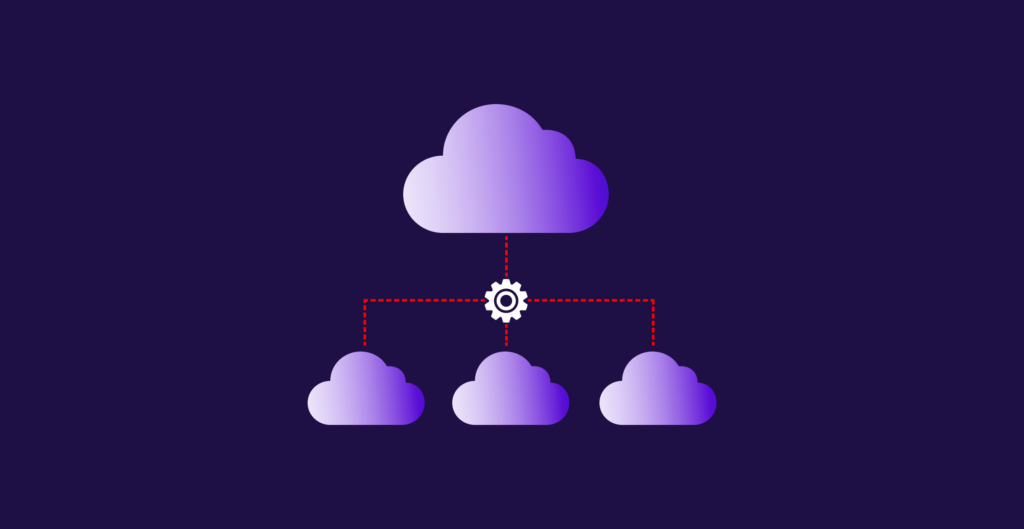
Why You Need Integrated Network Security
- Integrations
- November 5, 2024
- RSS Feed
By Gary Taylor, Solutions Architect
Having interoperable network security is key to protecting your business from a crisis. Here’s why you need it and how your business can achieve it.
If cybersecurity isn’t number one on your network team’s list of concerns, it probably should be. According to Forrester, “Two years ago, 63% [of organizations surveyed] said they had been breached at least once in the past year. This year, that number rose to 78%.”
Consider this along with the fact that it takes an average of 277 days for security teams to identify and contain a data breach. How much damage could an unwelcome visitor cause in that time? According to Statista, a lot, as the global cost of cybercrime is expected to reach more than US$450 billion in 2024.
Throwing random security solutions at your network isn’t enough to protect your business from these threats. Instead, integrating your network security will pivot your approach from reactive to proactive, placing you several steps ahead of malicious actors.
What is integrated network security?
Put simply, integrated network security means unifying your security tools and systems into a consolidated solution. This can be achieved by favoring security providers and methods that give you a comprehensive and consistent security setup as opposed to a siloed one. Rather than using disparate security tools, you favor next-gen firewalls, secure web gateways, and unified threat management platforms.
Why integrate your network security?
Integrating your segmented security applications and tools offers advantages far beyond what you might expect:
- You can monitor, configure, and respond to security incidents from a central interface, simplifying your network management and reducing your cyberthreat response time.
- You have less tools to manage, saving you time and often reducing overheads.
- Your team has peace of mind knowing that every part of your network is monitored including your cloud environments, data centers, and edge endpoints.
- You can scale your security solutions effortlessly alongside your network to accommodate new cloud environments, devices, and locations.
- You use automation to help you identify and respond to emerging threats in real-time, as well as apply consistent safeguards across your stack to reduce manual intervention.
- You can easily achieve regulatory compliance, even if you’re in an industry with strict regulations (for example, HIPAA compliance in healthcare).
- You can reduce customer-impacting incidents, such as outages and data breaches, to improve your reputation and profitability.
- You’ll get possible cost saving benefits by reducing your number of security providers.
How to integrate your network security
Use one of these methods or use all of them – these are the key ways you can switch from siloed network security to a fully integrated approach.
1. Embrace SASE
If your network extends to the edge, Secure Access Service Edge (SASE) is a must. SASE is a framework for converging the best elements of software-defined networking and SD-WAN with modernized edge security for a flexible and highly secure network that extends from your public, private, and hybrid clouds all the way to the branch.
SASE is an example of a composite application, which “orchestrates independently developed programs, data, and devices to deliver a new solution that none of the previously available applications could deliver on its own.” SASE utilizes any combination of Zero Trust Network Access (ZTNA), Cloud Access Security Brokers (CASBs), Firewall as a Service (FWaaS), and Secure Web Gateways (SWGs) to safeguard your network from end to end. We cover these elements in more detail in our introduction to SASE.
Using SASE can integrate your network security by:
- giving you full visibility over your cloud suite and applications
- reducing your network’s attack surface
- consolidating security processes across your applications to reduce the risk of data breaches
- allowing you to control how your applications communicate with each other and how traffic enters/leaves your network
- incorporating secure web gateways to filter unwanted traffic and enforce compliance
- applying advanced web filtering and access control measures.
As well as these benefits, SASE helps reduce network costs, improve performance, and simplify your branch-to-cloud management.
2. Use APIs to apply consistent security policies
Standard tokens are an important component of composite applications; they work as a general instruction which a software engineer can then code and apply across multiple applications. These tokens are created through Application Programming Interfaces (APIs), which “enable two software components to communicate with each other using a set of definitions and protocols.”
Network administrators can use APIs as a set of customizable instructions to heighten security across connected applications. For example, APIs could be used to:
- trigger automated quarantine actions across your network when an endpoint protection system identifies malware
- pull relevant event data from firewalls, endpoint security software, or cloud services into a Security Information and Event Management (SIEM), where it can be analyzed in real-time
- connect your on-premises firewalls with cloud-based security services (like AWS Security Hub or Azure Security Center) to enforce uniform security policies across both local and cloud networks
- integrate your network monitoring tools and compliance platforms to automate reporting on key metrics like user access logs, security rule changes, and incident response times for regulatory audits
- trigger your network security management system to instruct a patch management tool to automatically deploy patches when vulnerabilities are detected, reducing the window of exposure.
You can use APIs for a lot more than just network security, too; they can be provisioned to improve network performance, reduce costs, and simplify traffic management. There are thousands of possibilities.
To start provisioning APIs, you’ll want to use an Infrastructure as Code (IaC) tool like Terraform. These tools give you the ability to automate the creation and management of your network infrastructure, apply consistent security policies, implement your own access control workflows, and manage your network alongside your compute and storage for a single source of truth.
3. Embrace Zero Trust Network Access
True to its name, ZTNA is a network setup that treats all endpoints as hostile. ZTNA services do this by creating an identity- and context-based logical access boundary around your applications. This setup protects applications from being discovered, restricting access to a limited set of permitted entities – usually remote employees of an organization.
Taking a ZTNA approach to your network contributes to what is known as an adaptive trust model, simply meaning that trust is granted on a case-by-case basis rather than conditionally assigned. This approach significantly reduces the chance of cyberattacks, especially for workplaces with hybrid or remote working models.
The virtual nature of ZTNA provides a consistent connection experience regardless of where, or which network, you connect from, making it ideal for protecting hybrid or widely distributed networks and integrating your network security.
To set up ZTNA, you’ll first want to orchestrate your network without the embedded security functions found in most management feature sets like filtering, profiling, and end-to-end network segmentation. Instead, you want to replace these features with cloud services that send authentication and authorization requests to public cloud Points of Presence (PoPs). In short, you’ll move your security management processes to the cloud.
4. Check your network encryption in transit
Using encrypted data storage environments—known as encryption at rest—is a must, and most cloud providers offer this feature at no additional charge. But is your data also taking an encrypted connectivity route when it moves from one place to the next?
Encrypting your data in transit is just as important as encryption at rest, closing your circle of protection and further integrating your network security.
There is more than one way to encrypt your data in transit, and each method has its own set of advantages and disadvantages. Host level encryption, MACsec, and IPsec are the most common encryption methods; we compare each of them in this blog.
Whatever method you use, encrypting your data in transit protects against cybercriminals trying to intercept your sensitive information when it’s on the road.
5. Use next-gen firewalls
As cyberthreats evolve and networks grow more complex, conventional firewalls are no longer enough to protect your data. Instead, next-gen firewalls (NGFWs) combine the features of traditional firewalls with advanced network filtering features that you can scale across your enterprise network.
Leveraging Firewall as a Service (FWaaS) from a third-party provider is a great way to implement a NGFW quickly and easily. Positioned between your enterprise network and the public internet, FWaaS works to protect your architecture from cyberattacks through multiple filtering and security measures that prevent incoming threats from penetrating your network. Such measures include automated responses upon threat detection, full event logging, an intrusion prevention system (IPS), and Domain Name System (DNS) security.
Opting for FWaaS over traditional alternatives:
- unlocks a large variety of use cases you can apply to increase security across your network
- improves your network visibility with network-wide threat monitoring
- offers real-time compute and deployment capabilities
- forms part of a zero-trust framework
- allows for custom configurations to suit your individual needs
- can tie in with your existing SD-WAN setup and SASE infrastructure.
Learn more about how FWaaS works and all the ways you can use it in our FWaaS blog.
6. Choose flexible connectivity providers
Selecting vendor-neutral, as-a-service, and globally available connectivity methods that support open, interoperable networking allows you to extend your security tools to every corner of your network.
These flexible connectivity methods, like Network as a Service (NaaS), act as a layer beneath your cloud architecture that you can use to unify your different security tools. These providers will also centralize management of your network security, giving you the ability to oversee and change your connections through a single pane of glass.
Add to the benefits of using a flexible connectivity method by favoring lightweight, scalable solutions with consumption-based pricing, so you can scale your network security in line with your growth.
Megaport for integrated security
Megaport’s global NaaS platform allows you to build secure, scalable, and agile networks in just a few clicks – and you can manage it all in one simple portal.
- Our vendor-neutral, global connectivity backbone unifies your entire enterprise network with 930+ enabled locations and 380+ service providers.
- We’re ISO/IEC 27001 certified so you can build a totally secure network with peace of mind.
- Use our public APIs to automate provisioning and management – we even have our own Terraform provider.
- Get secure edge networking capabilities including SD-WAN, routers, and firewalls from leading Virtual Network Function (VNF) providers including:
Chat to our friendly team to discover how you can use Megaport to integrate your network security.


